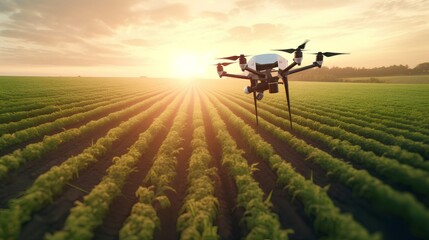Optimizing the use of agricultural drones and robotics can greatly enhance efficiency and productivity in farming operations. Here are several key strategies to optimize their use:
- Define clear objectives: Clearly define the goals and objectives you want to achieve using agricultural drones and robotics. Identify specific tasks, such as crop monitoring, spraying, or mapping, and determine how these technologies can contribute to those tasks.
- Assess your needs: Evaluate your farm’s specific needs and challenges. Consider factors like farm size, terrain, crops grown, and the specific tasks you want the drones and robotics to perform. This assessment will help you select the most suitable equipment and technologies.
- Select the right equipment: Choose drones and robotics that are specifically designed for agricultural purposes and align with your requirements. Look for features such as robust construction, long battery life, advanced sensors, and customizable options to meet your needs effectively.
- Plan and execute precise operations: Develop detailed flight or operation plans for your drones and robotics. This includes mapping the area, defining flight paths, and setting up the necessary parameters for automated operations. Precise planning ensures efficient and accurate execution.
- Integrate data collection and analysis: Drones and robotics can gather vast amounts of data, including crop health, soil conditions, and irrigation needs. Implement a system to collect, store, and analyze this data effectively. Utilize software tools and algorithms to interpret the data and generate actionable insights for decision-making.
- Implement automation and smart control: Explore the automation capabilities of agricultural drones and robotics. This can involve setting up automated flight paths, remote sensing, and monitoring systems. Utilize smart control features to optimize operations and reduce human intervention.
- Train operators and technicians: Provide proper training to the operators and technicians responsible for operating and maintaining the drones and robotics. Familiarize them with the equipment, safety protocols, flight controls, data analysis tools, and troubleshooting procedures.
- Regular maintenance and calibration: Ensure regular maintenance and calibration of your drones and robotics to keep them in optimal working condition. Follow the manufacturer’s guidelines for maintenance intervals, battery care, sensor calibration, and software updates.
- Monitor performance and evaluate results: Continuously monitor the performance of your agricultural drones and robotics. Assess their effectiveness in achieving the desired outcomes, such as improved crop yields, reduced resource usage, or enhanced pest management. Regularly evaluate the return on investment (ROI) to justify their continued use.
- Stay updated on advancements: Keep up-to-date with the latest advancements in agricultural drones and robotics. Technology is evolving rapidly, and new features, sensors, and software are constantly being developed. Stay informed about innovations that can further optimize your farming operations.
By following these strategies, you can optimize the use of agricultural drones and robotics to improve productivity, increase efficiency, and make informed decisions for your farm.
Join 'Farmers Mag' WhatsApp Channel
Get the latest Farming news and tips delivered straight to your WhatsApp
CLICK HERE TO JOIN






